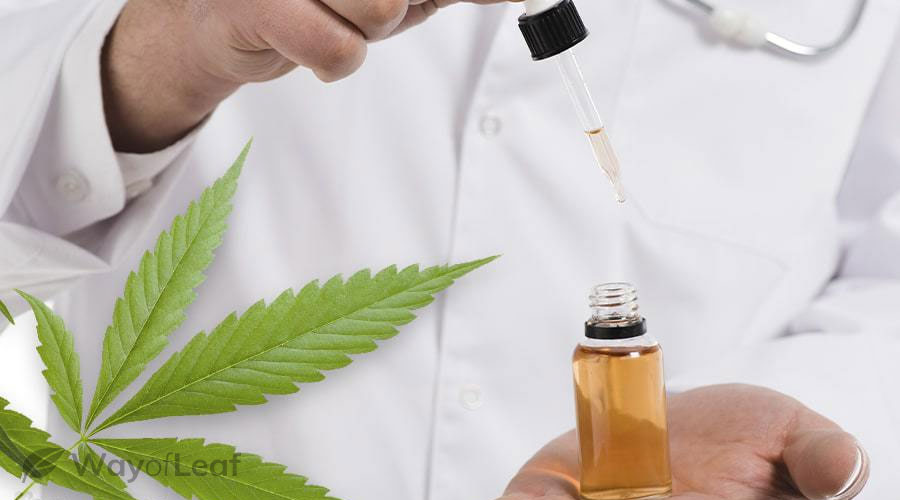CBD stands for cannabidiol, which is a naturally occurring cannabinoid found in the cannabis plant.
Cannabinoids are a class of chemical compounds that work in a similar way to neurotransmitters in the body. Cannabinoids don’t only exist in cannabis; they are also found in humans and other animals. All vertebrates produce cannabinoids, and those found in the human body are referred to as endocannabinoids.
With its recent rise in popularity, there has been a lot more interest surrounding CBD.
Endocannabinoids have a similar structure to the cannabinoids found in cannabis. This is how and why they can act within the system of the human body known as the endocannabinoid system (ECS).
We will explore this in more detail a little later. Understanding cannabidiol is the key to understanding how CBD products work and why the compound has captured the attention of so many scientists.
CBD: What Is It?
CBD is the abbreviation for cannabidiol. It’s one of the primary compounds found in the cannabis plant. After tetrahydrocannabinol (THC), an intoxicating compound, CBD is the second-most abundant cannabinoid in the cannabis plant. However, unlike THC, CBD is non-intoxicating – meaning it won’t make users feel high.
Cannabinoids are the molecules responsible for the cannabis plant’s medicinal and recreational properties. Today, there are over 100 known cannabinoids. THC is the best-known. It is most commonly used for its intoxicating properties.
On the other hand, CBD is associated with promoting an overall sense of calm. It may also help to bring the body back into balance.
More importantly, CBD could have numerous therapeutic benefits. These include anti-inflammatory, pain-relieving, anti-anxiety, seizure-suppressant, and analgesic properties.
How Does CBD Work?
How CBD interacts with the body and brain is rather complicated. To date, scientists have found more than a dozen different ways that CBD affects us.
The benefits of CBD are likely due to the sum of its effects on several of the biological pathways, not just one in particular. However, a lot more research is required to fully understand how CBD helps with conditions such as seizures and anxiety.
CBD interacts directly with numerous components in the body and the central nervous system. A few of these are components of the endocannabinoid system (ECS).

While THC is an agonist of the CB1 receptors, CBD is an inverse agonist. This means it can block some of THC’s intoxicating effects that are enacted via that receptor.
In addition, our bodies consist of several other receptor proteins that work in the ECS, like GPR3, GPR6, TRPV1, and TRPV2. CBD binds to all of these, and many of its pain-relieving and anti-inflammatory effects may occur through these pathways.
CBD also does some very important work outside of the ECS. For example, it mildly activates one of the brain’s predominant serotonin receptors, 5-HT1A. This could explain why CBD is reportedly useful in the treatment of anxiety and depression.
CBD Product Types
There is a wide array of CBD products available on the market. Many brands offer CBD via tincture extracts, vape oils, oil concentrates, topicals, and pure hemp oil. You also often have the choice of various CBD-infused foods, like gummies, candy, or chocolates.
Tinctures and pure oils are administered sublingually. This means that you place the oil under the tongue and wait between 1–2 minutes to swallow it. On the other hand, vape liquids are inhaled using a special vape e-pen.
You can also apply CBD topically. Skin and beauty products infused with CBD are all-natural and thought to be very good for the skin. Many athletes like using CBD salves for joint and muscle pain either before or after workouts. It helps to soothe aches and pains from vigorous exercise.
CBD Derived from Hemp vs. Marijuana
When a person is thinking about using CBD for the first time, they should know where it is sourced. CBD sourced from cannabis is very different from cannabidiol sourced from hemp. If you are considering CBD for the first time, please consult your physician or a CBD knowledgeable physician for more information.
CBD originating from hemp contains little to no THC, and therefore won’t make users intoxicated. However, when sourced from cannabis, CBD is found together with THC. The THC could cause an intoxicating effect – depending on how much of it is present in the final product.
CBD originating from hemp contains little to no THC, and therefore won’t make users intoxicated.
Currently, cannabis is illegal unless you are in a state that allows it for medical or recreational use. Hemp CBD, on the other hand, is legal in the majority of states. That is, as long as it’s properly sourced following regulations in the 2018 Farm Bill.
If you want to know if the CBD is sourced from cannabis or hemp, you will need to check the product label or inquire with the company. All reputable and trustworthy CBD companies publish certificates of analysis (COA) or lab reports for their products.
Final Thoughts on What CBD Stands for
While it is the abbreviation for cannabidiol, CBD also stands for a revolution in our view of health and wellness. Large populations of people are beginning to realize and utilize CBD for its benefits to bring balance to the body.


![Which Country Consumes the MOST Weed Per Capita? [Answered]](https://wayofleaf.com/wp-content/uploads/2019/08/wol-banner-which-country-consumes-the-most-weed-per-capita-640x225.jpg)

![Is it Bad Practice to Vacuum Seal Weed? [EXPLAINED!]](https://wayofleaf.com/wp-content/uploads/2019/05/wol_is-it-bad-to-vacuum-seal-weed_1920x450-640x225.jpg)



![How to Maximize the Health Benefits of CBD [Answered]](https://wayofleaf.com/wp-content/uploads/2018/10/mj_how-to-maximize-the-effects_1920-640x225.jpg)



